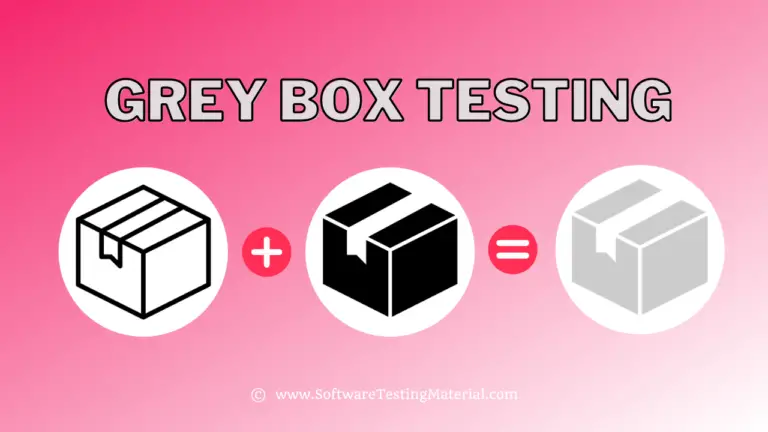What is User Acceptance Testing (UAT) | Complete Guide

In this article, we will learn what is User Acceptance Testing along with the following.
What Is UAT Testing?
UAT stands for User Acceptance Testing.
User acceptance testing is the last step in software testing that verifies whether the software is fulfilling the initial goals according to user requirements.
During UAT, the users check the specified business behaviors and functionalities of the system. At this stage, real-world scenarios are implemented on behalf of end-users to verify the software is working according to requirements.
It is performed after persistent, system, and regression testing is evaluated.

Who Performs UAT?
Usually, UAT is completed by the client and the end-user to validate the requirements were both properly communicated and executed.
- Client – UAT is performed by the Stakeholders of the software
- End-users – UAT is performed by the end-users of the software
The users are the individuals who’ll use the application, if not daily, a minimum of ofttimes. So, it’s very important to form users a part of the entire quality strategy within the software development lifecycle.
Types of User Acceptance Testing
The following are the types of User Acceptance Testing.
Alpha Testing:
It is performed onsite in the developer’s test environment by the users outside the development organization.
Beta Testing:
It is performed at the client-side by the real users or customers outside the development organization.
Don’t miss these 100+ Types of Software Testing
When Is It Performed?
It is performed after the system testing. It is the last step before the software goes production environment or market and before the stakeholders accept the product.
UAT is the most decisive and efficient software testing procedure that ensures that developed software is filling all requirements to float into the market.
That’s wherever UAT comes in handy. this kind of testing, quite the other, puts the users’ wants in the middle of the discussion. Some important questions it’ll help to answer such as
- Are the users ready to use the application?
- will the application behave in expected ways?
- will the application solve the users’ problem?
At this time, you may be thinking one thing like this:
“This whole UAT factor feels like it’s vital, kind of, however, can we really need it? I mean, we tend to have already got various testing types implemented…aren’t those sufficient?”
That is really a decent question to arouse the table. The short answer is “No.” the marginally longer answer is within the next section.
Why User Acceptance Testing is needed?
Developers are technical people who code the software based on requirements. They understand the requirements according to their knowledge and develop the software which sometimes may not be the same as what the client wants.
Even testers are technical people who follow requirement documents and test against them.
So User Acceptance Testing is vital even though the software undergone Unit, Integration, System testing.
As a matter of fact, UAT helps the business team a lot. If they involve in the project early then they can easily communicate the gap in the requirements to the development team. It would be easy for developers and cost inexpensive for businesses to fix the issues before the software goes live.
User acceptance testing consists of scenarios that validate that system displaying output according to end-users input. It is not the testing that ensures that the software application does not crash and meets the requirements that are documented. Rather than it validates the package is giving correct answers according to user input. This testing is mostly called Beta Testing according to software vendors.
This testing is undertaken by the subject matter experts (SME) that are the owners of answers and supply judgments to confirm that one trial or review has been completed successfully. UAT joined the stages of a project that usually happened before the client accepts a new system. A user of the system performs these tests according to real-life scenarios.
UAT Process Overview:
The number of steps for performing user acceptance tests might vary but every team aims to perform each step in the testing procedure. These steps include;
- UAT process includes a designing section whenever the business strategies for UAT are required to make public.
- In the second step, possibilities need to check for identifications to implement business strategies. Different possibilities of meaningful cases are required to check that end users can face.
- In the third step, different groups for testing are needed to choose. Developers choose some end users for testing software package or provide free trails for some time to any user that want to use.
- After the testing documentation section is provided to document different potential bugs and different problems that can encounter during the testing procedure.
- After the documentation phase fix phase is implemented to fix any bugs or issues that can be raised during the software testing procedure.
Entry Criteria (Prerequisites) of UAT Testing
Following are the entry criteria for User Acceptance Testing:
- Accepted business requirements should be available
- Fully developed application
- Testing types like Unit, Integration & System testing should be completed.
- System integration testing should be completed with no showstoppers, high severity, medium severity defects.
- Regression testing should be completed with no major bugs open
- Cosmetic errors can be acceptable
- All the bugs which are reported should be fixed and tested
- Requirement traceability matrix should be completed and up-to-date
- UAT environment with proper test data
- Confirmation mail (sign off) from system testing team that the application is ready for UAT
How to conduct User Acceptance Testing
The steps in In-House universal acceptance testing procedures are;
Planning
In this step, blueprints are made to implement UAT testing for every feature that needs to test and minimum standards for accepting that test. Outlines are determined to identify requirements for core application.
Designing
Test cases are designed to hide all possible possibilities of software packages in a real-world environment. In every step, a sequence of operations is described to hide the expected result from the merchandise. The designing procedure is implemented simply and efficiently to make testing procedure ease for testers.
UAT testers
A testing team consists of real-world users that meet the criteria for implementing testing. The end users must have expertise in Subject Matter, the ability to observe and report the problems.
Test execution and reporting phase
The test team executes all test cases for the testing procedure. Sometimes, it also executes some relevant tests. All bugs are documented with relevant comments.
Bug fixing
In response to bugs, the software package development team makes final changes in the code to make software error-free. After removing all bugs testing is implemented again to check whether all bugs have been removed or not.
Sign off
After removing all bugs, the testing team indicates acceptance criteria for a software package. This phase shows that the application is fulfilling all needs for users and software is ready to float into the market.
UAT is very important because it demonstrates the business needs of different functions in a manner that suits to the real-world environment. A universal acceptance test is considered an important aspect before discharging the application to the public. This procedure is implemented to make sure that the software package that is floated to the market is error-free and all the problems have been communicated.
Exit Criteria (Post requisites) of User Acceptance Testing
Following are the exit criteria for User Acceptance Testing:
- No show stoppers, high & medium defects open
- Smooth working of business process
- UAT Sign off meeting with stakeholders
How we can differentiate UAT from other testing methods
UAT is performed by actual users
One reason for not bringing effective results from user acceptance testing is users unable to implement identical rules to UAT because there are different sorts of testing. The main focus should be a software package or application suited in every user context. The users should need to detect all defects. If the individual alone tries to find out those defects, then there are possibilities you miss some goals for constructing your application that supports the user according to their requirements. The chance is that if your base acceptance tests on outlined user needs, you’ll pass the tests, however, fail to seek out wherever the system fails to support real-world wants.
UAT is not acceptance criteria testing
This implies that designing test cases for UAT ought to seem like business processes and user eventualities rather than individual purposeful test cases. User acceptance criteria are those points that are ideally outlined terribly early – even before a project is initiated. This analysis will entail quite simply “pass” and “fail” determination. Maybe, whereas during UAT testing, it’s going to become obvious that the software package is unable to fulfill user needs.
UAT is mostly manual
User Acceptance Testing should be focused on manual checking because there’s usually very little come back on investment with test automation. Because of this, careful analysis is required at the check strategy level to make a decision on what proportion effort in test style is going to be wise.
Major UAT Challenges
Major challenges that the UAT testers face are
- The first challenges are to define who will involve in the UAT process from the team. Many roles need to consider like UAT owner, project sponsor, and UAT team. The UAT will manage the whole process and make final decisions with the team.
- The type of testing (in-person or self-paced) is defined by identifying the location of team members and whether you need multiple shifts for a test or not. It can either be performed in-person or remote or both.
- Environment setup and deployment procedure by software functional testing team will certainly create real-world use cases. Some testing like performance testing cannot be performed in an environment with incomplete test data. For each, a separate production environment needs to set.
- You should always need to set placeholder for UAT standard time frame that an organization can expect.
- It’s also a challenge to make sure that documentation is created and maintained in the whole project.
- UAT cannot consider as “one-size fits all” activity because some users have the motivation, skills, and time to perform an accurate test and some cannot.
- Test plans can have errors so test plans always required to be reviewed by the Quality Assurance team, project manager, or by any other people that know software testing.
Best Practices
The major goal of UAT is that system can support all day by day activities of business and user scenarios and ensure that system is working efficiently and correctly according to business needs. UAT can be applied in many forms; like in person, virtual-based, focused time and must fit in according to time. To make your UAT procedure to work effectively, everyone should put below 5 best practices in place;
- The first good practice that testers or software developers must have to choose the users who will act as end-user of a particular product. These users can be of any type like external or internal, experienced or unexperienced or both, and can also those who have varying jobs;
- Provide properly formatted tests or clear instructions to UAT testers. The reason behind this is that they might see those features for the first so clear guidelines, demo, or walkthrough might be needed in order to make it easy for them to understand.
- Always prepare a testing environment for UAT. Always ensure that the end-users have proper credentials and data related to the testing procedure. Provide data according to real-time use and setup according to expected system functions.
- Make a schedule for users to perform testing. Put proper planning of all processes to solve any issues. For example, remote users sometimes required to make conference calls during testing so that they can help.
- When some issues arise while testing, then testers must have solid plans to address those issues. If the users are stuck on some issues, then help them with their testing or try to change the testing procedure to move away from those roadblocks.
UAT Tools
Here are some of the UAT tools available in the market.
Fitness tool: FitNesse is a tool developed in Java used to conduct acceptance testing. It is an open-source testing tool. It is to specify and verify application acceptance criteria. It acts as an intermediate between the stakeholders in a software delivery process.
Watir: Watir is a free Open Source tool. It is used Ruby libraries for automating web browsers during a process of a User Acceptance Tests.
For reference, you can check this User Acceptance Testing Template by the San Francisco State University
Conclusion:
To conclude, it is very important to form users a part of the entire quality strategy within the software package development method. This testing should be performed by a subject-matter knowledgeable (SME), ideally, the owner or consumer of the application, and supply an outline of the findings for confirmation to proceed after UAT testing is done. In the software development world, UAT is performed at the ultimate stages of a project usually happens before a consumer or client accepts the new system. The UAT acts as a final verification of the specified business practicality and correct functioning of the system, emulating real-world conditions on behalf of the paying consumer or a selected giant client.
Also learn:
- Regression Testing Detailed Guide
- Blockchain Testing Detailed Guide
- API Testing Complete Guide
- SDET – Software Development Engineer in Test
- Career Shift From Manual To Automation Testing






